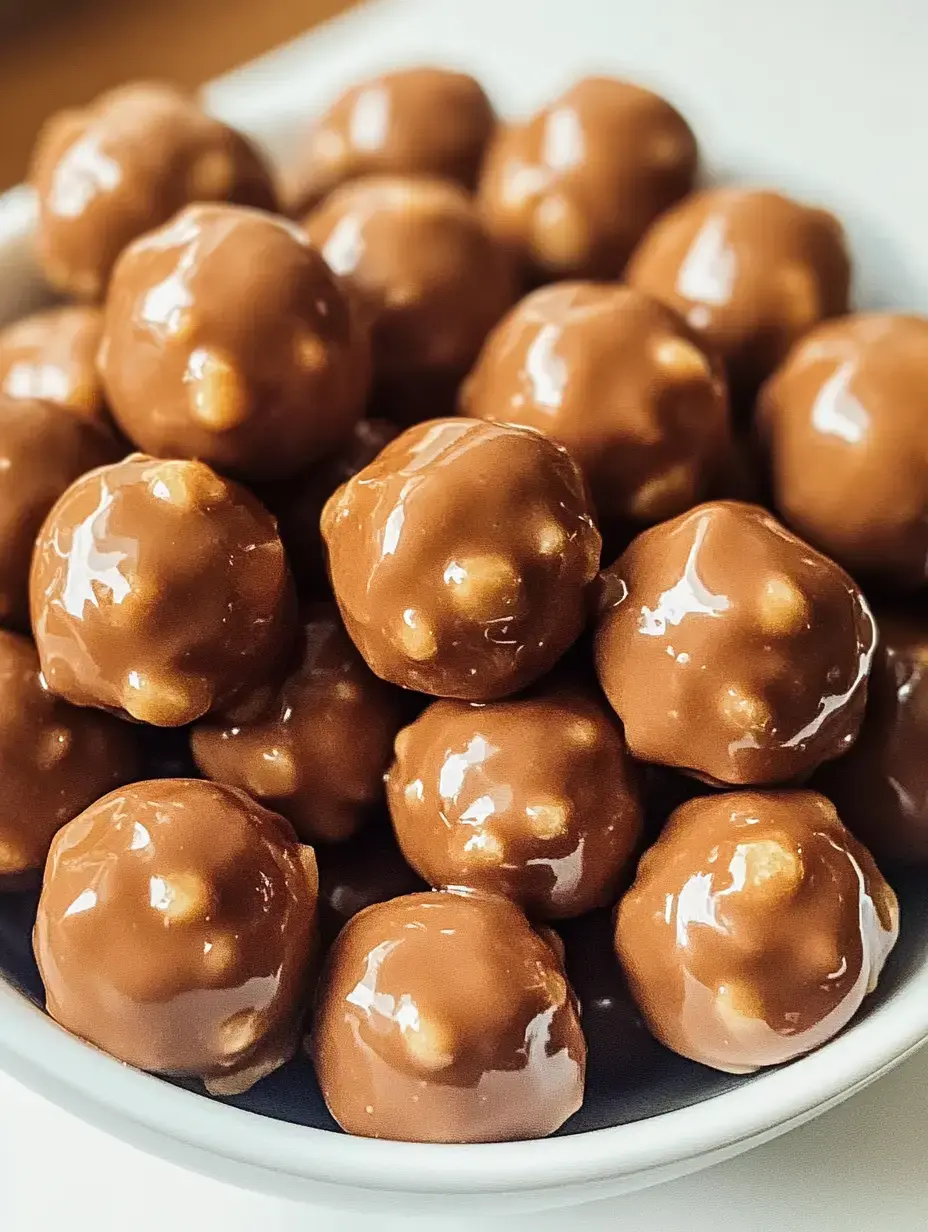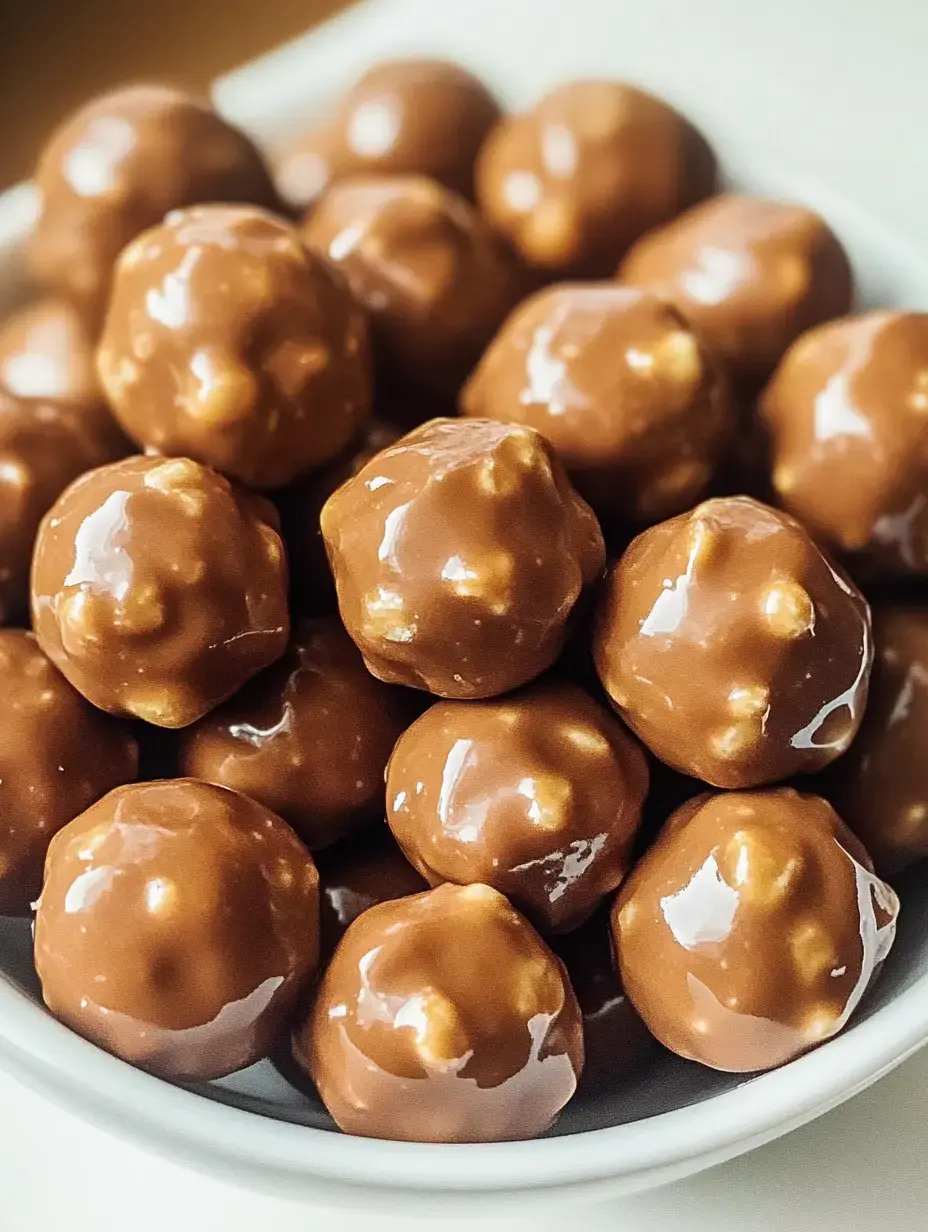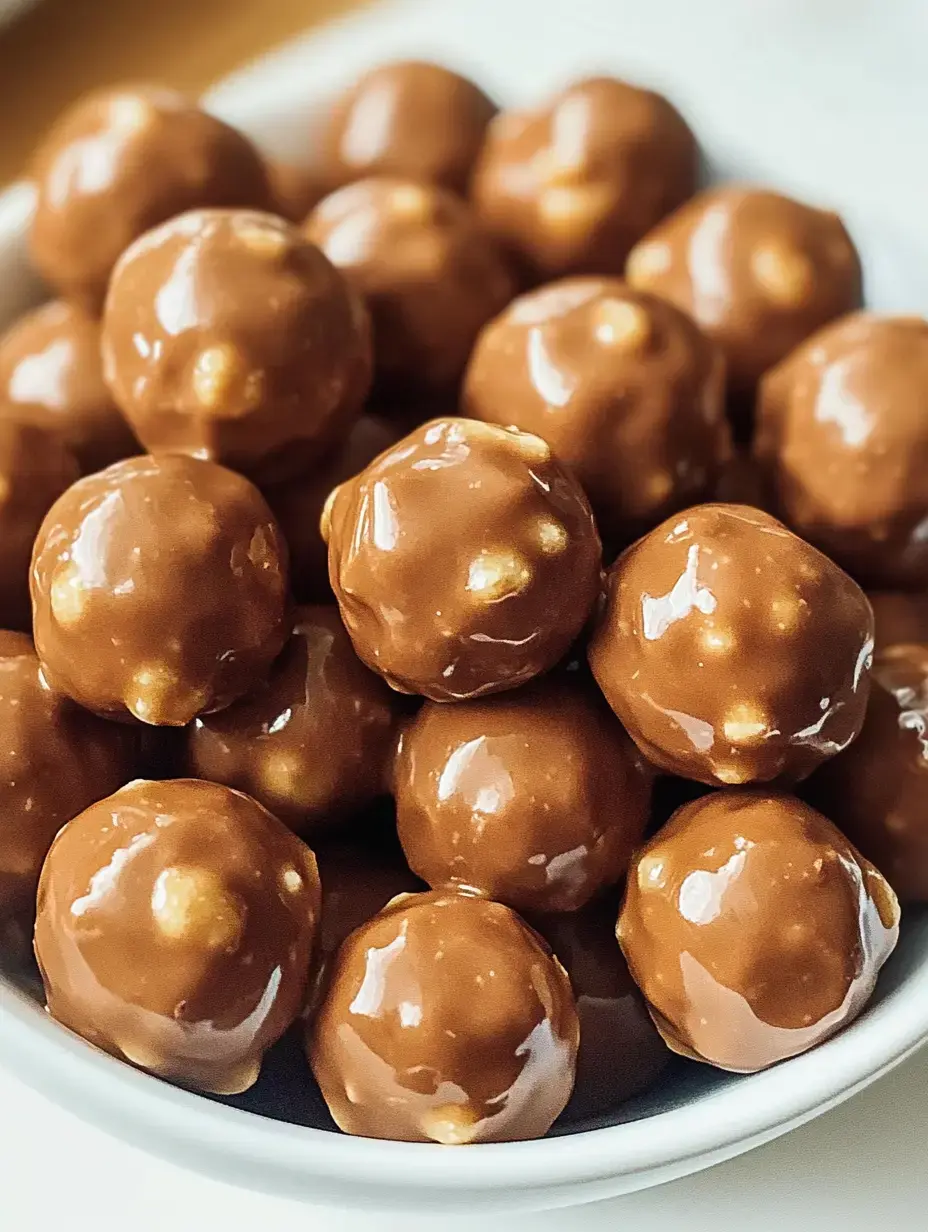 Pin
Pin
These Butterfinger Balls remind me of my favorite childhood sweets with an adult flair. Whenever I whip them up, folks can't get enough of the smooth peanut butter middle packed with crunchy Butterfinger chunks all coated in velvety chocolate. They're insanely tasty and way easier to make than you'd think.
What Makes Them So Popular
The coolest thing about these goodies is how fast they come together. You won't need your oven—just mix, smash, and shape. When that creamy peanut butter meets the iconic Butterfinger crackle, something truly special happens. I often make a huge batch to hand out to pals or stash in my freezer for when sweet tooth strikes.
What Makes Their Flavor Stand Out
Tossing in smashed Butterfinger bars transforms ordinary peanut butter balls into something remarkable. The candy brings this incredible toffee-like snap and boosts that peanut butter taste we can't resist. My little ones say they're just like treats from fancy sweet shops.
Essential Components
- Peanut Butter: Smooth varieties work wonderfully for that velvety center.
- Graham Crackers: They provide stability and a subtle honey sweetness.
- Butterfinger Bars: The key ingredient that makes these truly outstanding.
- Chocolate: I go for chocolate melting wafers for easy, reliable coating.
Beginning Your Prep
Find your largest mixing bowl and throw together that smooth peanut butter with smashed graham crackers and tiny Butterfinger chunks. Stir until it looks similar to cookie dough. I sometimes throw in extra graham cracker bits if the mixture feels too gooey.
 Pin
Pin
Shaping Your Treats
Now the enjoyable part starts. Grab small amounts and spin them in your hands to create perfect spheres. Set them on a paper-covered cookie sheet and tuck them in the fridge. They'll need roughly 20 minutes to harden, giving you plenty of time to get your chocolate ready.
Working With Chocolate
Getting chocolate melted right can be tough, but I've found a simple approach. I put a glass bowl over bubbling water and stir gently until completely smooth. Your microwave works fine too—just go slow and mix often. The trick is keeping water away from your chocolate or it'll turn grainy.
Adding The Finishing Touch
Here comes my favorite bit—dunking those cold balls into warm chocolate. I use a fork to swirl them around, then gently tap off any extra. Sometimes I scatter more crushed Butterfinger on top before the coating hardens. They look super fancy when done.
Letting Them Set
Allow enough time for them to fully harden. You can leave them out if your house isn't warm or stick them back in the fridge. I usually can't help myself and grab one while they're still partly soft. They taste wonderful either way.
Keeping Them Fresh
Store these tasty morsels in the fridge in an airtight container. They'll stay good about a month that way. Put wax paper between layers so they won't stick together. You can also freeze them up to 6 months, though at my place they vanish much faster.
 Pin
Pin
Creative Variations
- Switch Up The Candy: I sometimes swap in Snickers or Reeses instead of Butterfingers.
- Seasonal Touches: Add colorful sprinkles to match any occasion.
- For Those With Allergies: Sunbutter makes a great option for nut-free versions.
Prepping For Later
These work great as do-ahead party treats. I regularly make a bunch and keep them frozen without their chocolate layer. When needed, I just thaw and dip. Fresh chocolate makes them look extra impressive.
Nailing The Right Consistency
Getting the filling just right matters most. It should stick together when rolled but not feel too dry. If your peanut butter runs thin, toss in more graham crackers. Want extra crunch? Keep some bigger Butterfinger bits in your mix.
Delicious Alternatives
- White Chocolate Cover: Gives you a completely different flavor combo.
- Hint Of Mint: A small amount of mint mixed into the chocolate tastes fantastic.
- Added Texture: Throw in some crispy rice cereal for more crunch.
Presentation Ideas
They look amazing displayed at gatherings in small candy cups. They stand out on dessert tables next to other goodies. Wrap them in clear bags with cute ribbons and they become perfect gifts or take-home party treats.
 Pin
Pin
Troubleshooting Tips
- Mixture Too Sticky: Chill it a bit or add more cracker crumbs.
- Chocolate Too Hard: A tiny bit of oil will thin it nicely.
- Lumpy Coating: Tap your fork lightly for a smoother finish.
Worth Mentioning
These are definitely special occasion treats. Each ball packs about the same calories as a regular candy bar. I make mine smaller when I want to watch portions but still enjoy that amazing flavor.
Great Occasions For These Treats
These small bites of happiness fit any event. From casual TV nights to fancy holiday get-togethers, they always get grabbed quickly. Since they don't need baking, they're great for those hot summer days when you want something sweet.
Must-Have Equipment
- Large Bowl: For blending that tasty filling.
- Cookie Scoop: Makes forming balls much quicker.
- Baking Paper: Everything slides right off.
- Heat-Safe Bowl Set: Gets chocolate melted perfectly.
Why They're Special To Me
These Butterfinger Balls have become my go-to treat. My friends ask for them at every gathering and my family knows exactly where I hide them in the freezer. They bring together everything wonderful about candy-making without any complicated techniques. Try them once and they'll likely become your new favorite too.
Recipe Questions & Answers
- → Why isn’t natural peanut butter ideal?
Natural peanut butter tends to be too oily, leading to crumbly balls. Go for options like Jif or Skippy for a firm texture.
- → Could I freeze these snacks?
Absolutely! These freeze well for three months. Store in layers with wax paper in between to avoid sticking.
- → Why is chilling important before dipping?
Chilling solidifies the mixture, making dipping simpler and keeps the chocolate from melting too quickly.
- → What’s the best chocolate to use?
Melting wafers or chocolate bark are ideal since they set nice and firm. If using chips, add a little shortening for a smooth dip.
- → How can I stop the chocolate from seizing?
Melt on low heat in short bursts, stirring each time. Keep it dry—a single drop of water can ruin the batch.
